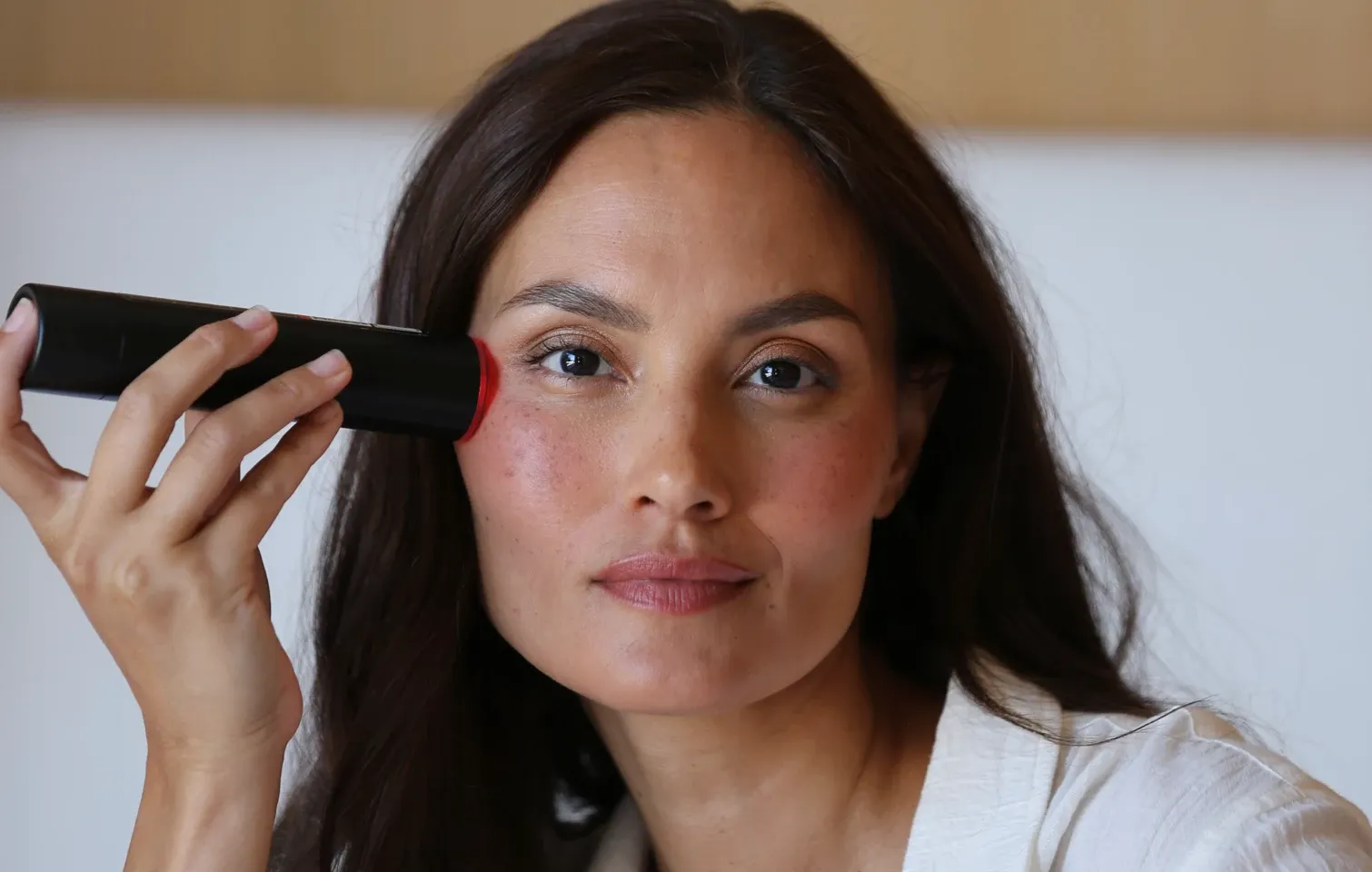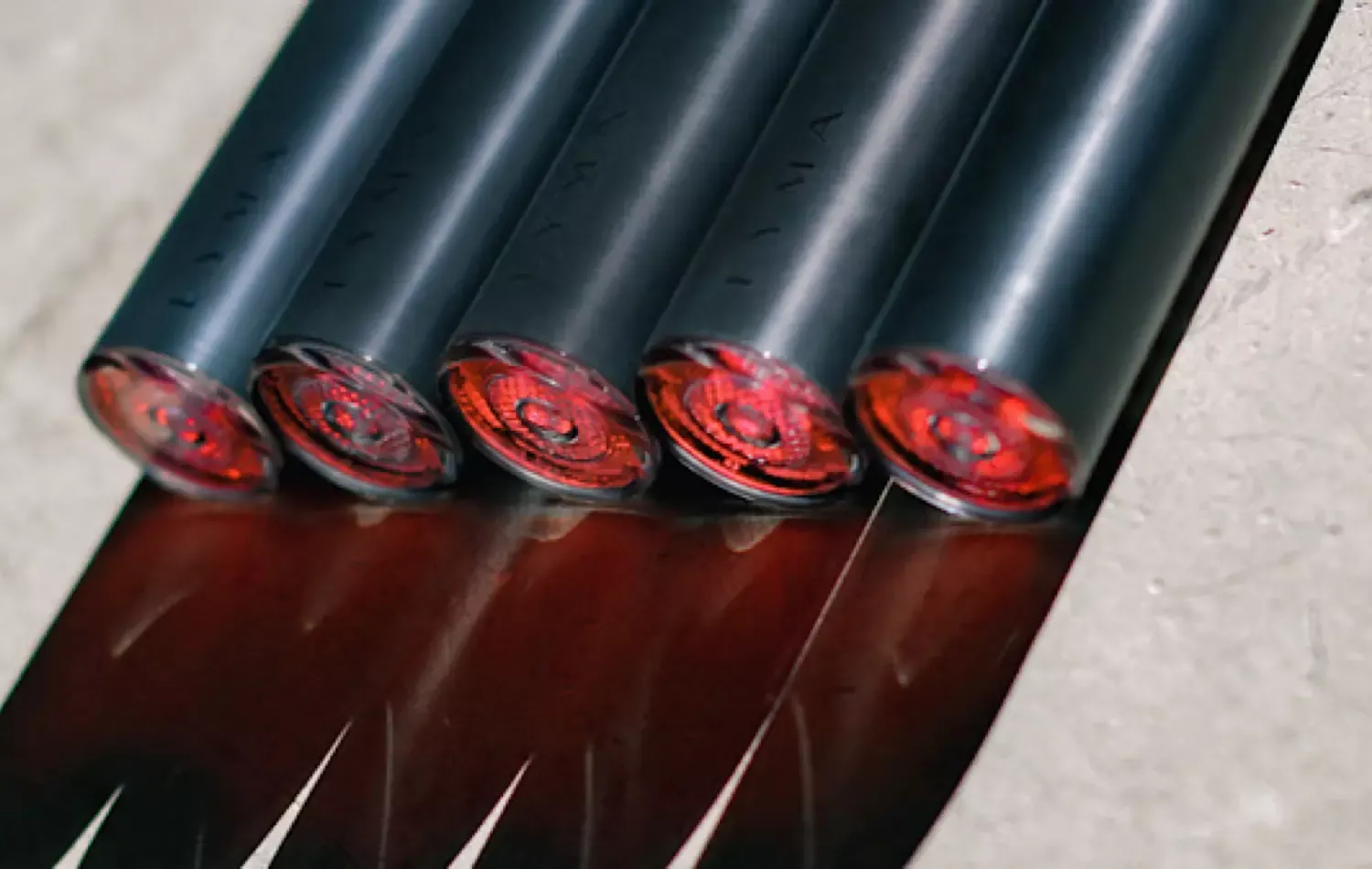8 Minute ReadReport by Jessica Lacey
03.10.23 (Updated 03.04.24)
Medically approved by Dr Graeme E. Glass, MD PhD Plastic Surgeon, Associate Professor of Surgery
The market for at-home beauty gadgets currently sits around a cool 34.5 billion US dollars and the want for new beauty technology is going nowhere but vertical. But along with the influx of laser technology, there's an associated rise in confusion as to which light therapy is capable of true skin regeneration.
Is red light therapy the same as LED? Red light is an umbrella term that encompasses all red light frequencies on the spectrum, both visible and invisible. Break it down and ‘infra’ means beyond; so infrared is light further along the light spectrum, beyond which the human eye can see. The longer the wavelength, the deeper the penetration and as such, the wavelength infrared puts out is longer than the wavelength of red light, meaning infrared penetrates more deeply into the body than typical red light. This allows near-infrared light to reduce inflammation and pain in muscles and joints and also regenerate the skin whilst shorter wavelengths like LED, stop at the surface.

Sounds implausible but true, Low-level Laser Therapy uses the exact same medical abbreviation as Low-Level Light Therapy. Both are LLLT, only one is referring to powerful, straight-line laser beams and the other, a much weaker and differently formed light source.
“When you're in an immature research environment like skin laser technology, lots of different terms are bandied about because no one quite knows what to call everything yet,” says leading Craniofacial, Aesthetic and Plastic Surgeon, Dr Graeme Glass.
“The earlier papers talk about LLLT but some results were using laser, others low-level light therapy and others, LED. Hence, scientific literature has moved away from the term LLLT because it’s imprecise and confusing and now uses the term Photobiomodulation (PBM) or Photobiomodulation Therapy (PBMT).”
Photobiomodulation is in essence, the non-thermal energy conversion of a very particular type of light energy into chemical energy by a cell. PBMT describes this energy transfer that causes cellular regeneration, LLLT gives no such context. But acronyms aside, what we’re all talking about here is the term for the sub-cellular process that's happening as a result of stimulation by the non-thermal irradiation of tissue with laser light. Simplify it further and it’s what happens when laser light impacts a cell and how that cell responds to it.
Absolutely. The reason that low-level laser therapy was coined as a term in the first place is to distinguish it from high-level laser therapy which is the kind of resurfacing laser that you might encounter at a clinic or by your surgeon.
Examples of high-level laser therapy in dermatology are CO2 Lasers which are ablative and entail controlled tissue destruction. Burning very specific cores of skin from the epidermis all the way down into the dermis and these multiple cores of vaporized tissue cause an inflammatory reaction which brings about tissue repair and it's the tissue repair that improves the quality of the dermis.
Low-level laser therapy causes no such destruction. The LYMA Laser is a low-level laser that operates at precisely 808nm that doesn’t produce tissue destructive heat but instead is the exact optimal wavelength to trigger a phenomenon called laser speckle.

Light happens in waves and laser light is monochromatic. That means every single unit of laser light is uniformly spaced, lined up and facing the same way in perfect identical wavelengths. These features of laser light allow it to be highly penetrative through skin, without losing any power along the way. In fact, laser light can even generate more energy when it’s in there, which is called a ‘laser speckle’.
“Particles of light, called photons, are sent traveling through tissue and when these photons hit something within the skin, they bounce off each other. If you can imagine that all these photons are bouncing off other photons, which amplifies the energy of the whole, you get focal areas of amplified energy, even at very deep levels of the tissue,” Dr Glass explains.
Hark back to the early 1990s (aka yesterday plus thirty years) when scientists were using LLLT (low-level laser therapy) in clinics for wound healing and skin regeneration but hadn’t yet figured out how to make that laser technology safe enough to be administered by anyone other than trained professionals in clinics.
“At the time that we were starting to understand photobiomodulation, almost all the scientific evidence coming out used laser light at the red and near-infrared end of the spectrum. That’s fine in a lab but the question that people had was, how can you translate into the clinical arena? Health and beauty technology companies saw commercial potential for this but very quickly, they realized they couldn't use lasers because there's no way we're going to be able to make a laser safe enough to be purchased by members of the public. At the time, LED seemed to have a similar enough wavelength to be passable but when they tried to back-engineer the technology, almost always when they compared that with early laser light, they found that LED wasn't nearly as effective as laser light,” Glass explains.
The mark-up for LED-based products was huge because LEDs were cheap, plentiful and used a low power supply, so it stands to reason that LED light-based therapy became popular in beauty tech products partly through expediency and partly exploiting the economics.
“It was hugely profitable so the marketing guys started working overtime to convince people that it was actually the same thing, which of course, it wasn't. LED light does not penetrate skin in the way that laser light does.”

LEDs contain none of the transformative, regenerative powers of their LLLT counterparts. Their wavy, far weaker light structure makes them a surface-level solution, entirely ineffectual for skin regeneration deep down.
“We’ve had LEDs in our homes for over two decades and they’re perfect for this because their light radiates into the room, scattering everywhere, even bouncing off the curtains,” says LYMA Founder Lucy Goff.
“You wouldn’t want a light that could travel through thick surfaces for that, otherwise you’d lose it. But LED cannot penetrate through thick surfaces, so it stays in the room right where you want it. The same LEDs used in Christmas tree lights and your kids' night lights are what is in cosmetic skin devices such as Nira's so-called "laser", they’re simple technology that’s safe and cheap. The problem is that when it hits a dense surface like the skin, it can't penetrate through to any significant extent.”
To be blunt, not all that much. LED is a scattered light source with wavelengths that disperse in all directions, bouncing off all the surfaces it meets, it simply doesn’t have the correct linear structure to travel. In fact, that’s why LED light therapy has an excellent safety profile - because it doesn’t travel into the body in any way.
Is red light therapy the same as LED?
“You are going to get some response with LED because it’s light in the red spectrum, especially in the epidermis which is very thin, and LED light doesn't need to be particularly penetrant to cover the epidermis,” Dr Glass specifies.
“However, I would say the cosmetic tech manufacturers of these LED face masks are really taking liberties because there is nothing different from an LED bulb used in cosmetic face masks from an LED which is used to produce a nice little light show in your children's bedroom. Not even brighter bulbs, it's exactly the same technology.”

As Dr Graeme Glass lays it out, “If we wish to improve wrinkles, we have to go to the dermis, which is where most of the active processes within the skin happen. Only a tiny amount of LED light can reach those layers and by the time it gets there, it's not enough to produce the kind of effect that we wish to see. So whilst an LED-based light mask can give you the appearance of a superficial glow, it can't actually make the structural differences to your skin needed to improve wrinkles and the appearance of scars.
We can understand why LEDs were developed in this way because at the time we had no alternative light source to use, but now we do. If you want to use something that can actually get into the active dermal layer of the skin, then you need to completely change the type of light source. You need a low-level near-infrared laser light.”
“The important thing to know is that laser sets itself apart from every other light source,” says Dr Graeme Glass.
“Near-infrared laser light is like a pin-point; piercing through dense surfaces without losing power. Hence why the near-infrared laser light in the LYMA Laser is capable of such incredible regenerative photobiomodulation.”
The LYMA Laser stands in its own category as a completely cold, low-level laser scientifically proven to accelerate tissue regeneration that you can use yourself from the comfort of your own home, office, bed, back of a taxi…private jet. Technology developed for medical rehabilitation, now in your hands for incredible skin rejuvenation. Call it LLLT, call it PBMT if you so prefer, call it full on revolutionary.